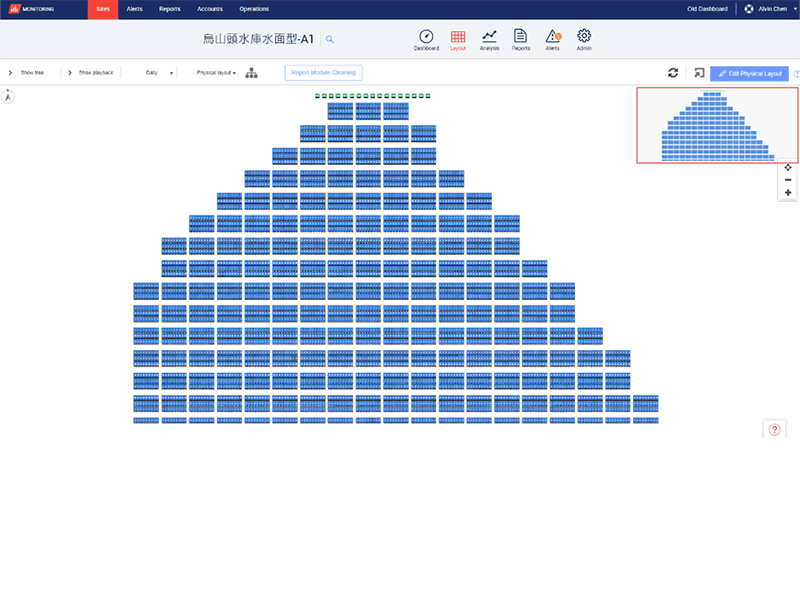Floating Into the Future of Solar with Floatovoltaics

Floating PV: The next generation of solar power
Floatovoltaics, or floating solar power, is having an increasingly large role to play in the transition to renewable energy. Interest is growing largely due to the declining cost of solar panels, but also because floating solar offers a great opportunity for investment where land availability is scarce or expensive.
How do floating solar panels work?
Floating PV refers to any type of solar array that is deployed on a special type of pontoon or raft so it can float on a body of water. Despite the aquatic environment, however, floating PV is similar to ground-mount PV systems in that the solar panels capture the DC energy from the sun's rays, which is then converted into AC energy by the inverter for use in homes and buildings, and to sell to the grid. Floating solar can be installed on almost any type of water area where there is no competing use, including salt water, fresh water, reservoirs, hydroelectric dams, and more.
What are the benefits of floating solar panels?
- No loss of land space
It's common knowledge that solar panel arrays take up a large amount of space. With agriculture, urban land development, transportation, and other factors creating extreme land-use competition, floatovoltaics offers significant opportunities to build a solar PV system on what is otherwise unused space. This is especially true in regions where land is at a premium. Floating solar also eliminates any need for deforestation to clear land for solar panels
- Water is so cool it improves solar panel performance
Even though they love the sun, solar panels actually do not like it too hot. This is because their electrical components lose efficiency as temperatures increase. Water provides a cooling effect that improves floating panel efficiency, which can yield more energy in comparison to ground-based systems.
- It’s environmentally beneficial for the water
By blocking direct sunlight from the surface, floating solar panels improve quality of water underneath by reducing evaporation and curtailing the growth of algae, weeds, and other micro-organisms.
Customer success story: Popular scenic reservoir in Taiwan now includes a 13.7MW Floating PV system
The Wi-Shan-Tou reservoir in Taiwan stores water for household, public, agriculture, and industrial use, and is also a well-known tourist destination known for its scenic landscape. The abundant sunlight and smooth water made it an ideal location for a floating PV system.
Xingye Green Energy, a subsidiary of Star Energy, won a government tender for the site with a proposal featuring a SolarEdge commercial floating PV solution. SolarEdge was the optimal choice for this type of installation due to its advanced safety features, ease of Operation and Maintenance (O&M), and ability to extract more energy from each solar module.
The SolarEdge floating PV system at Wu-Shan-Tou is expected to generate 17,000,000 kWh and save 8,906 tons of CO2 emissions per year.
Built-in Safety Features Protect People, Environment, and Investment
Safety was the main reason SolarEdge’s floating commercial PV solution was chosen for this installation. Our multi-layer safety features, include SafeDC™ , which automatically reduces the DC module voltage to touch-safe levels during grid failures or when the inverter is shut down to protect installers and maintenance staff, and AFCI features which prevent arc interruptions and other electrical hazards that can be caused by bad connectors or cables. This gave the investors peace of mind when installing a floating PV system in such a popular area.
Maximum Power Point Tacking (MPPT) Mitigates Panel Mismatch
Another factor that made SolarEdge the optimal solution was its ability to mitigate module-level mismatch, enabling each module to perform at its maximum capacity. Mismatch is common in floating PV solutions because the water’s movement changes the solar panel orientation to different tilts throughout the day. What’s more, many flocks of birds settle in the reservoir, causing partial shading to the solar panels at various times and leaving droppings that can significantly impact the panel’s production. Cloud cover, dew water, panel degradation and temperature difference also impact solar performance. SolarEdge’s inverter and Power Optimizer solution mitigate these effects by enabling each floating solar panel to perform at its maximum for overall greater energy output.

Partial shading caused by clouds at Wu-Shan-Tou's floating PV system


Easy O&M from anywhere
Star Energy is responsible for 20 years of O&M at this site, which would typically require routine site visits. For a 34,463-module installation built on water and split into two parts that are only accessible by boat, they wanted the O&M to be as easy and efficient as possible. SolarEdge’s Monitoring Platform enables real-time troubleshooting and data analysis accessible from any location. Star Energy can use the Monitoring Platform to pinpoint issues that may arise down to the module level, reducing the need for site visits and the time spent on site.
The future of floating solar & sustainability
Despite the complexities involved, floatovoltaics have unique benefits and are poised to transform the solar energy industry. In fact, according to nature.com, covering just 10% of the world’s hydropower reservoirs with floating PV could generate as much electricity as all the world’s operating fossil fuel power plants combined.
Read the full case study here.
